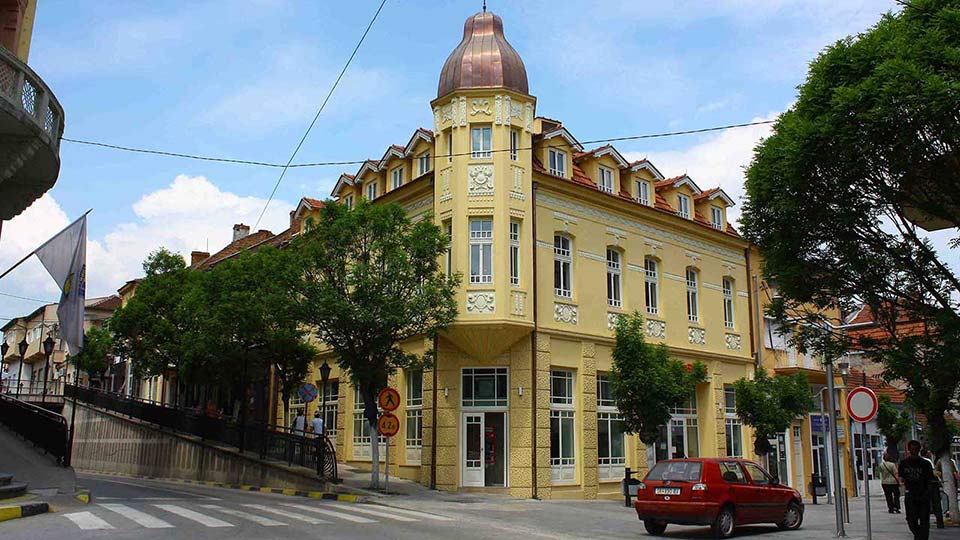Strumica - "the city of the stars and the city under the King’s towers"
Strumica is a cultural, trade and political center of the Southeast region. According to the 2002 census, the city has 35,311 inhabitants and is therefore the largest city in the region and the tenth largest city in the Republic of Macedonia. Situated in the southeast of Macedonia, the city is surrounded by the Strumica field and Mount Elenica in the west, along with the King’s towers. The city is the seat of the same-name municipality.
Location of Strumica
The Municipality of Strumica is located at 41° 22' northern latitude and 22° 35' and 23° 45' east longitude. It occupies the far south-eastern part of the Republic of Macedonia just below the boundary between the state borders with Greece to the south and Bulgaria to the east. The region that actually covers the valley between the mountains Belasica, Ograzden and Elenica. The most important national road M6 passes through the region. With it, the region is connected with the rest of the country, as well as with the Republic of Bulgaria and the Republic of Greece.
History of the city of Strumica
Strumica is a settlement from the pre-Slavic period. The oldest date for the existence of the city dates from 181 BC. Then the settlement is mentioned as Astranon (city of stars) as the main place of residence of the Peonian tribe Astron. As a Roman-Byzantine and ecclesiastical city, it is mentioned in the Middle Ages as Tiberiopolis. Strumica is a Slavic name of the city, obtained according to the name of the river Strumica, diminutive in the name of Struma. At the present place the city was restored in the 9th century by Tsar Samuil.
In that period, it grew into an important traffic and military-strategic centre. After his death in 1018 and the termination of Samuil's empire, Strumica is a Byzantine military-strategic and administrative centre for this part of Macedonia, and the Strumica diocese continued to exist. It had such a role until the end of the 12th century. From 11th to 14th century it falls under many spheres of interest by Byzantium and medieval Serbia and Bulgaria. Towards the end of the 14th century it falls under Ottoman slavery.
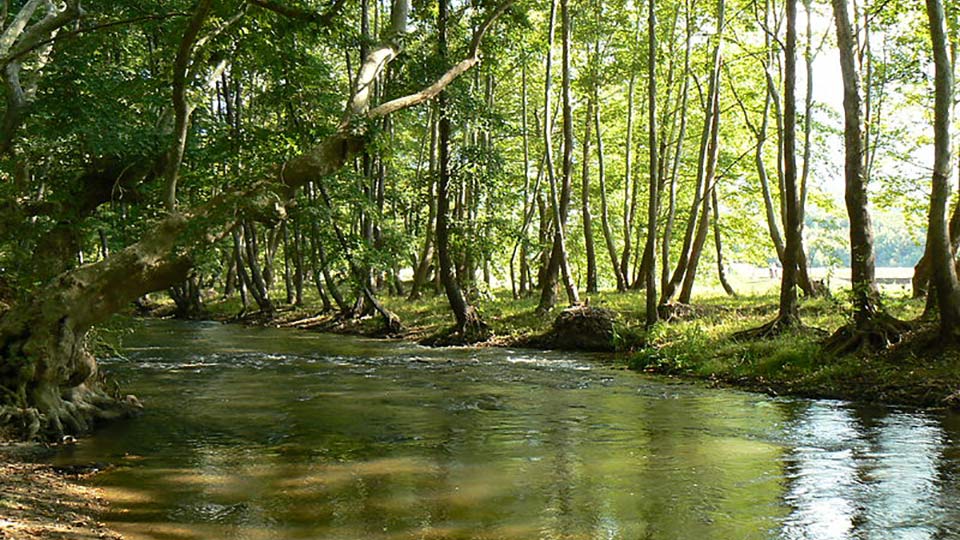
Tourist attractions in Strumica
Bansko Spa in Strumica
Termo mineral spa in Strumica from ancient times and one of the rare preserved Roman monuments of its kind in Europe, with a capacity of over 50 l/sec. It is located about 12 km east of Strumica, at the foot of the Belasica Mountain. Ten rooms have been discovered on an area of 1,000 m, with preserved walls in the height from 2 to 6,7 m. The spa Roman Bath (Therma) had a changing room, sauna, pools with hot and cold water. It probably originates from the 11th century, from the time of the Roman Emperor Caracalla, known for the construction and renewal of baths throughout the Empire.
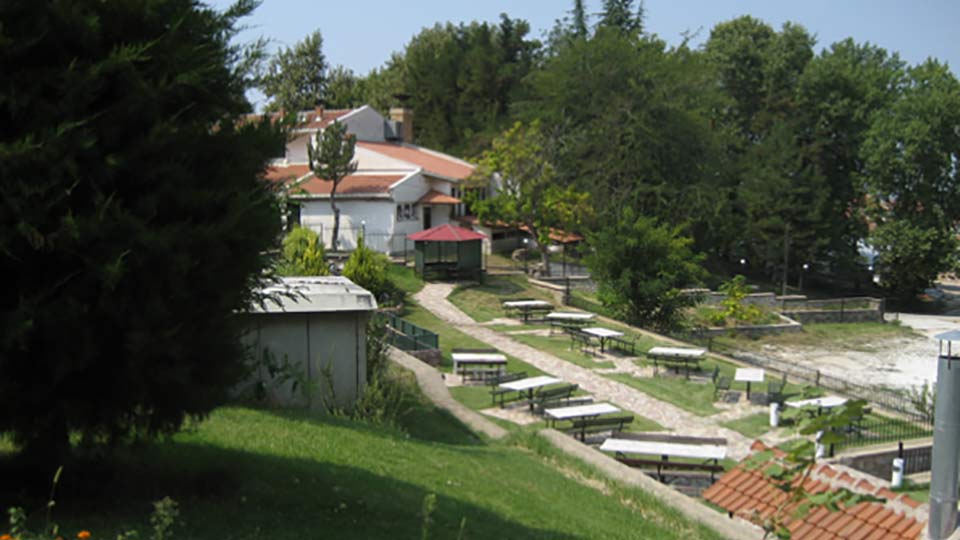
There are a total of five thermomineral sources, of which only one, the greatest, is professionally captivated. He flows into the main bath called "Turkish bath", and the other four freely flow. The water temperature in the main source supplying the "Turkish bath" is around 71⁰C and does not change during the year, which proves that the water originates from a great depth, without atmospheric influences. Spa waters are considered remedial for a variety of diseases, primarily rheumatic.
Accidentally discovered during the excavation of the foundations for the hotel "Tsar Samuil" in 1978 in Strumica, today the basins with natural water can be used within the hotel, where one can try and an egg cooked in warm springs, with a specific taste. In the surroundings of the spa there are forests of lime and chestnuts and several clear mountain streams. The fern from this Macedonian region is protected by the UN. The whole spa site offers excellent accommodation facilities and conditions for combined tourism types.
The two picturesque waterfalls represent a mandatory place for visiting the Strumica Smolare Waterfall.
Smolare Waterfall in Strumica
The Smolare waterfall is located in the immediate vicinity of the village of Smolare, on the mountain Belasica, at an altitude of 600 metres. It is an object with a height of about 35 metres. At the bottom of the waterfall there is a giant pot, the length of which is about five metres in the direction of flowing river water, its width is 11 metres, and the depth is about half a metre. Next to it, there is an access road and an arranged site for visitors with tourist and recreational function.
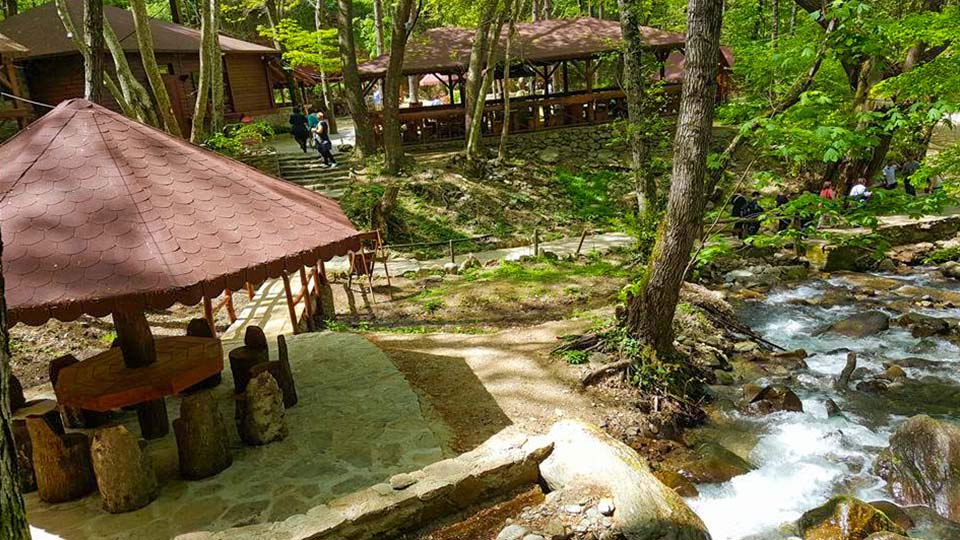
Kolesino waterfall in Strumica
It is located in the lower course of the Baba River at an altitude of 500 metre. It has a height of 15 metres and a width of about six metres. According to the occurrence, it belongs to the tectonic waterfalls. In the immediate vicinity of about 100 metres, there are several smaller waterfalls and slopes arranged in a row with heights of up to five metres. Group wedding on Kolesino Waterfall – From the first group wedding with ten married couples in 2008, under the auspices of the Municipality of Novo Selo and with the blessing of the MOC-OA, the traditional August ceremonial group wedding is gaining greater interest and attendance.

Monastery St. Leontius, v. Vodoca (11th century) in Strumica
Monastery St. Leontius, v. Vodoca (11th century) Strumica is filled with monks and church services, the restored lodgings again became a residential complex of the Strumica Diocese. The monastery is located in the village of Vodoca, which received its name according to the terrible event of 1014, when on that place under Belasica14,000 soldiers of Tsar Samuil were blinded by the Byzantines. The monastery has long been the episcopal residence of the Strumica Diocese. Throughout Macedonia's bad historical past it was devastated and its cultural treasure was brought to the neighbouring countries.

It was built on an early Christian basilica from the 6th century. The foundations are preserved with the remnants of the church: there are parts of the altar apse, from the “Proskomidijnik” (table on which the offertory gifts were prepared before the beginning of the Divine Liturgy) and the deaconicon from 6th to 7th century. Also, with the archaeological excavations in the monastery complex in Vodoca near Strumica, over 1,000 graves with jewelery and ceramics from the 14th to the 19th century were discovered. The Vodoca monastery has preserved medieval fresco painting with great significance. Painting is characterized by the length of the bodies and the solid modelation of the heads of the saints. Painted in the period from 1018 and 1037, the frescoes of Vodoca are among the masterpieces of medieval art in Byzantine painting in general.
Monastery H. Bogorodica Eleusa, village of Veljusa (11th century)
The Monastery H. Bogorodica Eleusa, village of Veljusa (11th century) is one of the oldest Macedonian churches which has never been destroyed or repaired and it is today as it was built, with marks of the decay, due to the time that had passed. The monastery is located above the village of Veljusa near Strumica, a wonderful panoramic view of the Strumica Field. The monastery and the lodgings are famous for their architecture, frescos, mosaic floors and marble iconostasis. Its origin from the 15th century is witnessed by the marble plate with the inscription of the founder, the Strumica bishop Manojlo and the year of construction, 1080. The plate with the inscription and the best icons during the First World War were robbed, and the monastery was set on fire, but not burnt. As a testimony and consequence of that are the smoky frescoes.
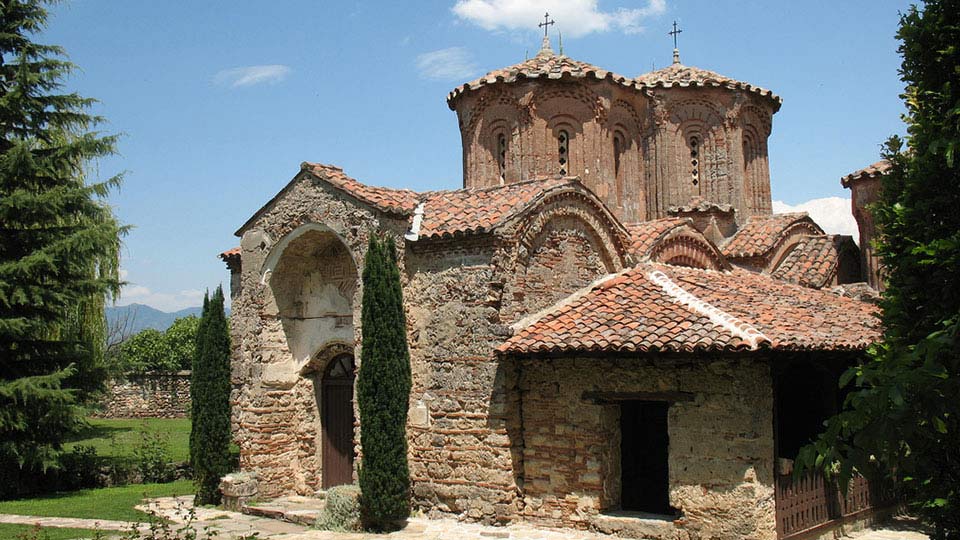
At some time this monastery was male, and in Vodoca there was sisterhood, while today it is vice versa. The monastery exceeds all the existing artistic achievements of the churches in the Strumica environment with the artistic values and the luxurious treasury of precious artistic works. A completely preserved composition from the time of construction is the Descent into Hell. There are other, partially preserved compositions of that period, as well as the famous Veljusa Cross, unique of this type in the world. In front of the altar there are fragments of mosaic floor. According to the originally rich historical documentation preserved for this monastery (available at the Sveta Gora Monastery Iviron), the church H. Bogorodica Milostiva (Eleusa) occupies one of the most significant places in the church and cultural history of the Balkans.
Carevi Kuli (King’s Towers) over Strumica
The oldest discoveries about the fortress raised on the hill southwest of Strumica speak for life even before the Roman Empire, the pre-historic period until the Middle Ages. According to some archaeologists, those could be remains of the ancient city of Astraion. All the previous findings suggest that on this site there were various civilizations in a period of about seven thousand years. The fortress was built on a leveled plateau on the top of the hill, which steeply rises above Strumica at an altitude of 445 metres, from which it is possible to see the entire Strumica valley.
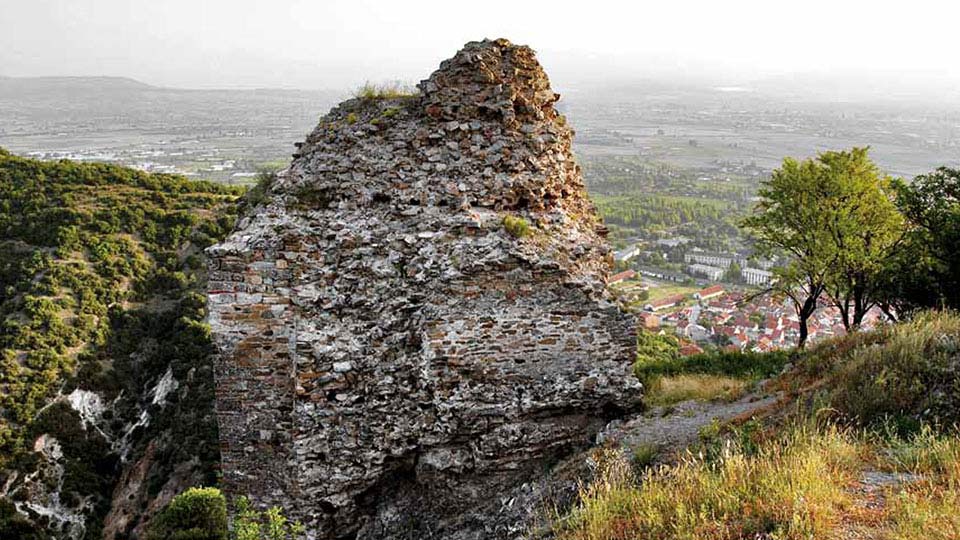
On the edges there are remains of a defensive wall, of which the west wall, about 40 metres long, is well visible today. With its thick walls, the towers represent a monument of the fall of the medieval Macedonian state of Tsar Samuil in 1018. It served as a fortress in the Ottoman period, as well. Byzantine coins from the 12th and 13th century were found in the fortress. Six fragmentary megar cups of Homeric type, which are very rare in these regions, dating back to the 11th century BC were discovered.
Antique coins from the time of the last Macedonian Tsar Perseus, as well as fragments of medieval fresco painting from the 12th to the 13th century, have been dug out. There were also coins with the image of Philip II, then amphorae, vessels, kanthaross, jewelry, fragments of painted vases, black-clad pottery, figures of minor Asian type and other artifacts. All of them points to the fact that the fortress above Strumica was actively living at the end of the fourth century BC.
City Square "Goce Delchev" Strumica
The square was built on two levels and covers a total area of 27 thousand square metres. It is with an overground paved area with a clock-tower, two fountains and with an overall installation of urban, cultural, traditional, ecological, horticultural and other content. Here is also the existing monument of Goce Delchev. Here is also the bronze figurine "Strumica citizen under a mask" dedicated to the International Strumica Carnival and 27 masts with the flags of the Member States of the European Union. Put in operation in 2010, the square already represents a pedestrian island in Strumica and is one of the inevitable modern city marks.
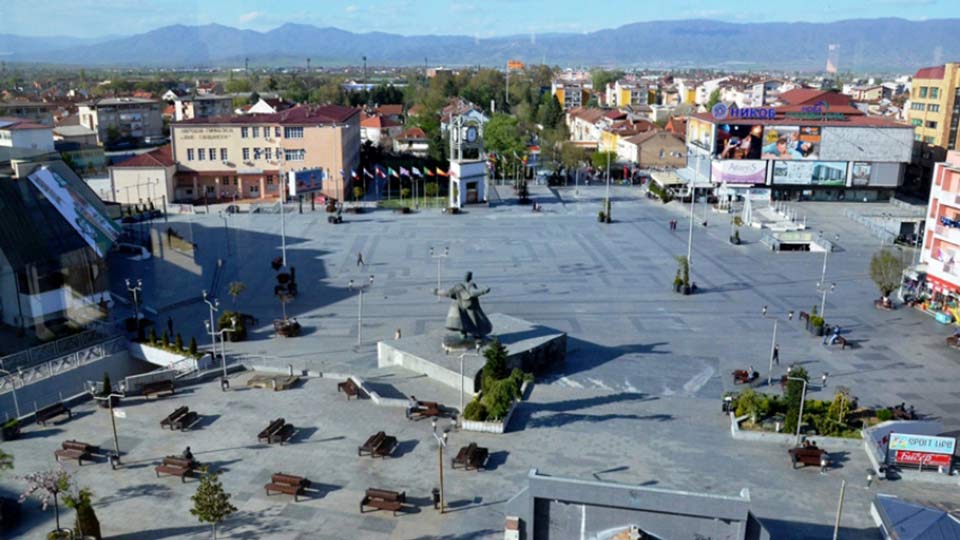
Strumica Carnival
Strumica carnival is an annual carnival held in Strumica. It is one of the most important customs and traditions of its kind in Macedonia. The carnival went perhaps farther in its transformation than all traditional masking games, both due to the time when it takes place and its purpose and function. The Strumica Carnival is held traditionally every year within the trimer days, that is, at the beginning of the great Easter fasting. The very name "Carnival" (Latin carne - meat uvali - goodbye, i.e. "goodbye meat"), is associated with the beginning of the fasting, and in this case it is the Easter fasting.
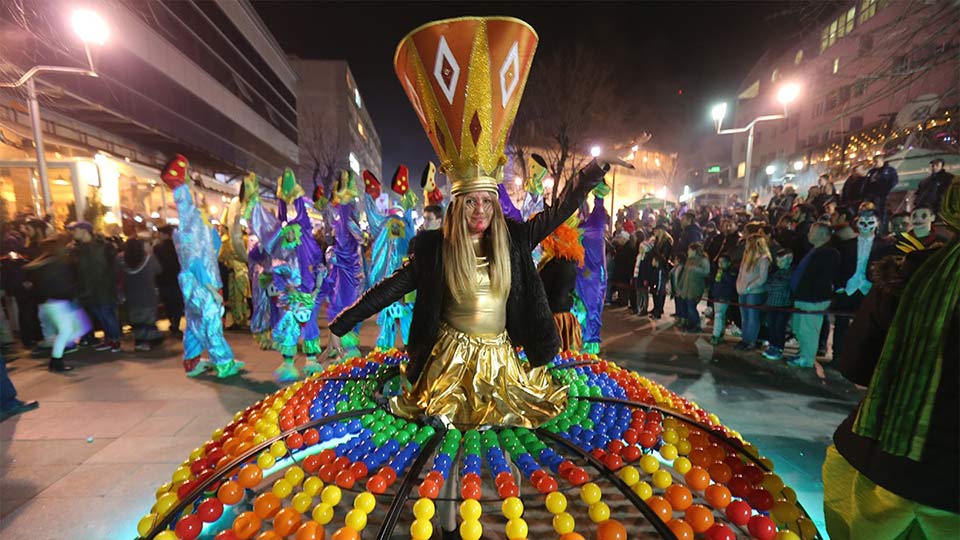
An indicative and highly probable data and symbol of the old age and antiquity of this carnival is the fact that many features of the masks, traditional clothing and objects that remained in use (leather clothing and horns of various animals, bull, male goat, ram, etc.) are characteristic only of its original pagan form. The carnival later experiences some transformation into a traditional form. A mask that is still remembered by the oldest Strumica inhabitants, because the carnival of any reasons, which are still only assumed, coincides with the trimmers, that is, the holiday of the engaged. This is reflected in the most common motifs that draw on it and which are most often repeated.
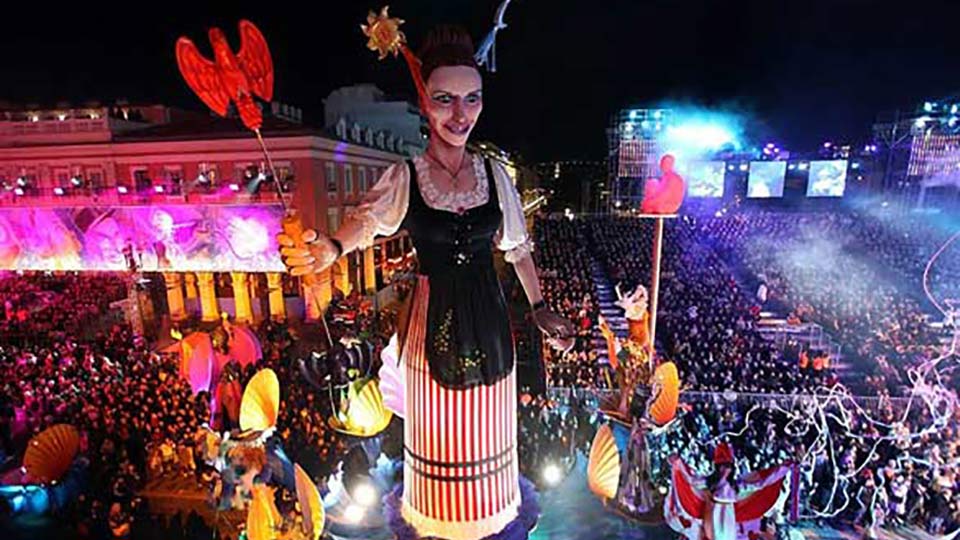
The most famous motifs of the carnival in Strumica are:
- The bride with the bridegroom, who symbolize the newlyweds, that is, the engaged;
- Male and female Gypsy with a baby, meaning that as Gypsies have many children, so the newlyweds would have great offspring, i.e. many children;
- A priest that blesses the newlyweds wishing them happiness, well-being and agreement in marriage;
- The devil, usually with horns, with a tail of an ox or some other animal and with a fork in his arms, chased by everyone, and the symbolism is the chasing away of all bad forces or influences that could occur and harm the newlyweds.
Motifs of the carnival
A very common motif is men dressed as women with distinctive female attributes and vice versa. This most frequently shows which physical features a man wants the woman to possess and vice versa. Another characteristic of the traditional form of carnival the purpose and intention of which coincides with the previous one represents the legacy of numerous erotic elements, songs filled with erotic motifs, content and words.
There is also the recognition of the boy by the big phallus made of a bottle or another object, and the purpose of which is didactic, i.e. referral and preparation of the bride for the future marital and sexual life. Here are also the musical requisites, i.e. musical instruments, guitar, harmonica, tambourine.
More recently, the Carnival in Strumica has gained a modern dimension, with some influences from similar carnivals in the world, and at the same time received a rewarding feature. However, the traditional character of the carnival and going to the houses of engaged girls as a custom remained. Through the diversity of colours, figures and masks with different motifs and themes, the participants in the carnival tend to show the eternal struggle between good and evil. Here is realism and sarcasm, irony, satire and tradition, polytronism and careerism, power and powerlessness. Masks are made by the participants themselves.
Each participant chooses their own theme and idea of masking, while group masks represent a common idea for the whole group. Among the types of masks, the most common are the anthropomorph ones and there are also zoomorphic and zooanthropomorphic masks. The number of participants in the carnival in Strumica, as well as the number of visitors, increases every year, and besides the local participants, guests from abroad regularly participate.
Economy in Strumica
Strumica is one of the first cities in Macedonia that develops both culturally and economically. The region became the largest producer of early and industrial vegetables in the Republic of Macedonia. Strumica is the centre of the vast rich Strumica valley. Here poppy, cotton, tobacco, sesame, peanuts and anise are grown. All this provides an opportunity for the development of textile and food industry in Strumica.
More information about Strumica can be found on this website.

